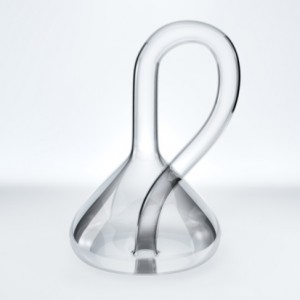Circus of Dreams (Part 20)
By Asher Crispe: December 12, 2012: Category Decoding the Tradition, Inspirations
To Light Up the Night
 It’s dark and cold outside. As a trope, the outside represents all external reality. The nature of its externality must be relative to something and in this case, that something is the consciousness of Divinity. The outside signifies what pretends to be otherwise than Divine, an otherness within Creation that resists being collapsed back into its Divine source (as far as our perception of it is concerned). The final goal is not to simply reabsorb this otherness back into its point of origin but rather extend our sense of Divine unity to embrace and uplift it, to sustain the paradox that comes from an even higher revelation of the quintessence of Divinity that lies outside the inside-outside distinction.
It’s dark and cold outside. As a trope, the outside represents all external reality. The nature of its externality must be relative to something and in this case, that something is the consciousness of Divinity. The outside signifies what pretends to be otherwise than Divine, an otherness within Creation that resists being collapsed back into its Divine source (as far as our perception of it is concerned). The final goal is not to simply reabsorb this otherness back into its point of origin but rather extend our sense of Divine unity to embrace and uplift it, to sustain the paradox that comes from an even higher revelation of the quintessence of Divinity that lies outside the inside-outside distinction.
Previously we have dealt with all of the powers of the soul as they pertain to Samech-circles in the world of Emanation or Atzilut that remain exclusively conscious of its Creator, but now we arrive at the final circle which completes the set. If we think of all of the other soul powers as native to our inner person, then this last level called malchut or ‘kingdom’ refers to that which is outside of myself and provides the receptacle (beit kibul) for my influence. By mating the inner experience of the human subject with the external objective world which is warped by the subjective field, we can actualize all of the innate dimensions that exist within the soul. Starting with the ‘light’ in my consciousness, I gradually shed light on the outside night of external reality by allowing my inner light to descend from thought to speech to action until it becomes palpable as a facet of my world.
‘Outside’ can then mean that which is outside my field of view, away from home, beyond my comfort zone or external to my understanding, to give but a few examples. The challenge is to produce so much light that the night itself shines like the day—a future that when achieved will transform our reality to such an extreme that (Psalms 139:12) “the darkness is as the light.”
The process of transformation follows a three stage process that can be depicted by three geometric forms: the triangle, the square and the circle. First, we must decode some of the symbolism of the the triangle or pyramid form. As this figure of a rigidly stratified or hierarchical system, it reflects the concept of the causal progression that is termed an histalshilut or ‘evolutionary’ phenomenon. The higher up the chain (histalshilut derives from shelshelit or ‘chain’) of command the more illumination one receives and presumably the more informed one is. The information flows unequally and those at the bottom are left mostly in the dark due to being unaware of what takes place at the top. With everything and everyone being strictly differentiated, I am cast in my place and experience existential submission (hachna’ah) to the order of things. Moreover, knowing one’s place prompts a person to remain stuck within the reality-as-pyramid model.
The second stage announces the forging of new foundations (yesod again means ‘foundation’) that redefine reality once it’s circumcised. As an inscription (the prime example of the ‘over-written’ body), the sign of the covenantal bond is ultimately meant to overlap with the other that couples with it. This sign sensitizes us to a zone wherein I cannot tell where I leave off and the other begins. The feminine obscures the masculine hiding within her, just as the objective world conceals the secret transference of subjectivity camouflaged within it. At the same time, the loss of masculine-feminine distinctness in all of our creative interactions offers the possibility that the feminine ascends above the masculine and takes the initiative. This would be akin to the otherness of the outside world affecting us on the inside. I may even come to identify it as me. Translated into the context of Creation as a whole, the secular masks a super concentration of Divinity.
This second stage introduces a separation within me as the circumcision ‘organ/izes’ a reminder of the other within me, an incision of the outside within the inside. Termed havdalah or ‘separation’ in Chassidic thought, this changes our sense of reality from hierarchy (total division between one level and the next) in the pyramid scheme, into a model of hitlabshut or ‘enclothment.’ Consistent with our example, the feminine enclothes the masculine, the human actor is dressed in the vestments of the world that turns into the womb/matrix/garb/home. Likewise, unless the world can cast me out of it, I am conceived within the world as I exist in a manner of being-in-the-world. This dual directional enclothment divides once again the original split between inside self and outside world (this itself is part of the counter intuitive thrust towards unification, not by merely dissolving the initial divisions but by dividing further).
How would this circumcised reality look? If I had two categories to begin with (me and the world), then I would create a squaring or ‘two times two’ expanded categories. There is me within myself, the world within me, me within the world and the world within itself. If we are dealing with masculine-feminine bifurcations, then it would be adjusted to four (two square) categories of the masculine within the masculine and the feminine within the masculine, the masculine within the feminine and the feminine within the feminine. Both same and other contain same and other. Graphically all elements of the x-axis correspond to all the elements in the y-axis. The cell blocks of the grid exhibit symmetry between both of its coordinates.
The third and final stage in this progression is the final shift which is facilitated by the righteous one (tzaddik) who, as we explained in the last article, transforms all of reality once and for all by spinning it into a circle. As the image of equality, there becomes a infinite sense of non-separateness between self and other. There only remains an endless circle that arcs outwardly from the self to the other–to the world–but without ever becoming separate or detached. Then, with one continuous motion we come full circle as the other or otherness ‘returns’ (teshuvah) to that it thought it left but never actually broke off from. It was connected all the time via a closed concealed circuit.
This example of the separation of the feminine, of the worlding of the world or othering of the other, externalizing of the outside, informs the creation of Chavah/Eve. When she comes into being it provides us with a model of the ‘other within the self’ that turns into the ‘other outside the self’ and that reunites as ‘one flesh’ as the self as the other and the other as the self. In remarking upon this, the Zohar makes a strange assertion that the first appearance of the letter Samech is in the word va’yisgor [ויסגר] meaning ‘closed’ in Genesis 2:21: “…and [He] closed up the flesh in its place,” even though it flies in the face of the text which uses the Samech in ‘sovev‘ (to surround) twice before this appearance. Nonetheless, this is the first Samech as far as the Zohar is concerned.
Why?
Subsequent to our working through the previous ten levels of the soul (from keter/crown until yesod/foundation) this last level relates to malchut or kingdom which can be looked upon as the first in the series if we consider its order from the bottom up. There is a kind of firstness or primacy to this Samech as though the earliest experience of our lives is not being surrounded (which is slightly more abstract), but rather being ‘closed’ in. Before fragmentation enters into our consciousness, we feel ourselves to be in a closed loop which seals us in. In this way reality-as-a-circle, puts everything into circulation. We all perform for the circus. Everything would then be constituted by a series of flows that revolve flirting with a self-other distinction that they cannot commit to. The split remains virtual. In the end, we are all part of one circle dwelling together.
This stage is referred to as hashra’ah or the infinite inspiration that sweetens reality fully by finishing off the de-differentiation that began with the separation stage of circumcision. We don’t merely have interincluded aspects, or a partial overlap of identities—we are fully integrated into each other with complete equalization or superposition (the total collapse of the pyramid so that Divinity is found just as much above as it is below).
What we had thought of as our lower reality with all it’s externality was but a circus (Samech-circle as circus implies the circle etymologically) of dreams. Perhaps, if it must be a three ringed circus—the full entertainment package—these would correspond to the three lower worlds of Creation, Formation and Action that come after the world of Emanation. These lower worlds or externalities are all born out of the original cut (nasirah) at the level of malchut/kingdom of the world of Emanation. From there the descent began and from there the ascent can also begin.
 In the future, this feminine level rises above that of ‘her’ masculine counterpart and emerges as (Proverbs 12:4) “a virtuous woman – the crown of her husband….” In other words, from the bottom up (it then counts as the ‘first’) she crowns (which is something external and added from the outside) the head of her husband. Metaphorically this crown denotes will. She supplies will or defines the head or mentality of the insider mentality. Redemption comes from the outside. What was in exile as a descent to the outside, a de/gradation of the feminine must in the end restore the feminine to a position of privilege which nullifies the old masculine hierarchies.
In the future, this feminine level rises above that of ‘her’ masculine counterpart and emerges as (Proverbs 12:4) “a virtuous woman – the crown of her husband….” In other words, from the bottom up (it then counts as the ‘first’) she crowns (which is something external and added from the outside) the head of her husband. Metaphorically this crown denotes will. She supplies will or defines the head or mentality of the insider mentality. Redemption comes from the outside. What was in exile as a descent to the outside, a de/gradation of the feminine must in the end restore the feminine to a position of privilege which nullifies the old masculine hierarchies.
Envisioning this future then explains why the wedding of male and female (as parallels to the masculine and the feminine) is done with a ring or Samech-circle. It closes or seals the bond that unites them. Additionally, the bride encircles the groom under the chuppah (canopy) to reflect the future reality described in Yirmeyahu/Jeremiah (31:21)“…for God has created something new in the earth: a woman will court [literally ‘surround’] a man.”
More on the secrets of the triangle, square and circle in Part 21.
http://www.interinclusion.org/inspirations/circus-of-dreams-part-21/
http://www.interinclusion.org/inspirations/circus-of-dreams-part-19/
Circus of Dreams (Part 20),























;)
;)
;)
;)
;)
;)
;)
;)
;)
;)
